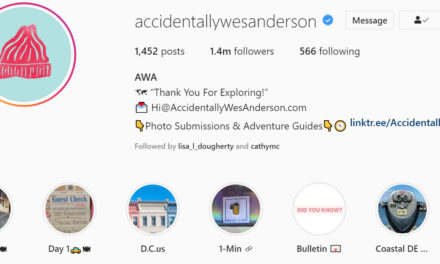When it comes to content marketing, too many of us are guilty of breaking the cardinal sin: disguising thinly veiled sales pitches as “content.” When you think of marketing like a first date, the problem with this approach is obvious. Imagine the person sitting across from you explains that they were captain of the debate and track teams, graduated summa cum laude from Yale, and founded their own company all before they turned 30. Impressive, right? Now imagine that they spend the entire date telling this story without asking you about yourself once.
That’s how consumers feel when they’re bombarded with advertising and marketing messages. No matter how impressive the brand may be, no one wants to hear someone brag about themselves when they haven’t taken the time to build a relationship first.
Put simply, there is a time and a place for different messages, and brands need to have the right mix at the right time. To find the right balance, brands can use what we call a “story matrix.”
The Story Matrix
The story matrix helps brands plan a mixture of evergreen stories and timely pieces-the first will bring in traffic consistently, while the later are boom and then bust. Content marketers will be most successful if they’re able to “think like publishers,” by planning ahead, publishing a mix of story types, and hitting hard deadlines. But it’s also true that brands have a different set of business goals to worry about.
Think of the story matrix as something that overlays the sales funnel. As a prospect moves down the funnel, the content you share with them moves down the story matrix, becoming more product-specific. At the top of the matrix are shared interests. The middle of the matrix is made up of educational content about the company and its customers, and the bottom matrix is when it’s appropriate to share product specific content that will help push a lead to a customer.
Imagine you’re a new grocery delivery service. Top of the matrix content may be an infographic about traditional Thanksgiving recipes and how they’ve changed over time. Evergreen content for the middle of the matrix could be a feature about one of the local farmers who supplies food to the company. And bottom matrix content could be a short video about how to efficiently order groceries through the company’s website.
Striking a balance between all three layers of the content matrix is critical, which is why it’s important to start planning ahead-and building a calendar-from the very start.
Building an Editorial Calendar
After your team has sat down and brainstormed ideas that fit into each section of the story matrix, it’s time to build out your editorial calendar. The task seems daunting, but if you use story matrix as a framework, half the battle is already won.
The purpose of the editorial calendar is to plan well in advance, of course, but it’s also to create deadlines. Consistency, after all, is key in building an audience. The first thing to consider are the goals for your content. Your goals should be in the back of your mind with each decision you make. For example, if you’re a B2B marketer trying to give leads the final push they need to become customers, it may make sense to create a white paper that clearly explains the most impactful way to use your product.
However, if your goal is brand awareness, a thought leadership piece on industry trends from your CEO would probably be more appropriate. If you have amazing ideas from your brainstorm that don’t tie into your goals at all, don’t use them. Save them for potential use later, but for now it’s important to stay focused on building around your goals.
When you’re creating your calendar, make sure you indicate the key elements of each story:
- Author (if you have more than one contributor it’s often helpful to assign authors topic areas or “beats,” which allows contributors to develop expertise in a specific area.)
- Audience
- Format/Type
- Due Date
- Publish Date
This will help you stay on track, as well as go back and analyze the success of your content based on the author, audience, format, and topic.
In theory the concept of creating goals and planning to meet them may seem simple, but according to a recent report by the Content Marketing Institute, only 35% of content marketers have a documented strategy. Among those that do, 60% rate their efforts highly in terms of effectiveness; for those without a documented strategy, that number drops to 32%.
So while it’s not easy for busy marketers to devote the time and resources to putting together an editorial calendar, the pay off for creating high quality content is well worth it. The story matrix should help make the process easier-and more effective-along the way.






